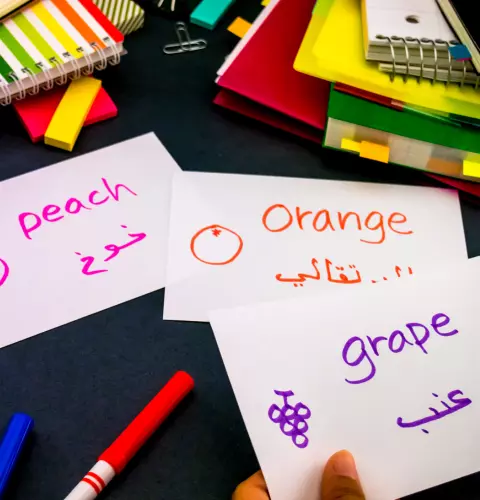
Blog
Moroccan Languages: Your Guide To Moroccan Arabic & Berber
Morocco is a culturally diverse country, and its languages play an important part in establishing its character. Moroccan Arabic and Berber are the two most widely spoken languages in Morocco. In this in-depth study, we dig into the enthralling world of Moroccan languages, examining their origins, characteristics, and cultural relevance. Join us as we unravel the linguistic fabric of Moroccan Arabic and Berber.
1. Introduction
Morocco has a rich cultural legacy, and language is an important aspect of its identity. Moroccan Arabic and Berber are the two predominant languages among the country’s varied people. While Arabic is the official language, Berber is an important cultural heritage language for several ethnic groups throughout the country. Let us investigate these fascinating languages and learn about their historical and cultural relevance.
2. Moroccan Arabic: The Language of Daily Life
Moroccan Arabic, often known as Darija, is the country’s most frequently used language. It is the principal mode of communication for the vast majority of the population, making it a necessary part of daily life in the country. Darija is a distinct dialect of Arabic that has had an extensive impact with other civilizations such as French, Spanish, and Berber.
a. Origins and Evolution
Darija’s roots may be traced back to Classical Arabic, which evolved over centuries as a result of contact with other cultures. Morocco’s historical context, including periods of Arab, French, and Spanish influence, has affected the language’s evolution.
b. Features and Characteristics
Darija has distinguishing characteristics that set it apart from other Arabic dialects. The language combines many Berber words and phrases, giving it a distinct Moroccan flavor. Darija also employs simplified language and pronunciation as compared to Classical Arabic, making it more accessible to the general public.
c. Cultural Significance
Moroccan Arabic is important in defining the country’s cultural identity. It is the common language of Moroccans of many backgrounds, generating a sense of solidarity and fraternity. Darija also reflects Moroccan history, fusing numerous language elements into a harmonious whole.
3. Berber: A Tapestry of Indigenous Heritage
Berber is an indigenous language in Morocco. It is sometimes referred to as Tamazight or Tachelhit. It reflects a one-of-a-kind cultural legacy that passes down through generations.
a. Historical Significance
Berber is one of North Africa’s oldest languages, having origins extending back thousands of years. It was the language of several ancient civilizations that flourished in the region, notably the Carthaginians and the Numidians.
b. Linguistic Diversity
Berber has a remarkable linguistic variety, with many dialects spoken across Morocco. Each dialect represents a distinct cultural identity, reflecting the local population’s historical background.
c. Cultural Resilience
Berber culture and language have survived despite historical challenges, demonstrating the perseverance and pride of the Berber people. Efforts are now being carried out to conserve and promote the usage of Berber in education and the media.
4. Moroccan Languages – A Cultural Tapestry
Morocco’s linguistic context is a beautiful tapestry fashioned from historical, diverse, and cultural interaction threads. Moroccan Arabic and Berber coexist to demonstrate the peaceful mixing of heritage and modernity, while also reflecting the nation’s multicultural culture.
5. Conclusion
Moroccan Arabic and Berber are essential components of the country’s cultural fabric. They symbolize Morocco’s rich origins and historical contacts that have created its identity. Understanding these languages provides tourists with a peek into the essence of the place and enhances their trip experience. As you travel to Morocco, embrace the country’s linguistic variety and appreciate the unique tapestry of Moroccan languages, which is a monument to the country’s unity in diversity.



6. Frequently Asked Questions (FAQs)
Q. How many people speak Moroccan Arabic in Morocco?
The vast majority of Moroccans speak Moroccan Arabic as their primary language.
Q. Is Berber still widely spoken in Morocco?
Yes, Berber is spoken by a significant portion of the population, particularly in rural areas.
Q. Are there any efforts to preserve Berber culture and language?
Yes, the Moroccan government has taken initiatives to promote the use of Berber in education and media.
Q. Can tourists get by with English in Morocco?
While English is not as widely spoken as French or Moroccan Arabic, many people in urban areas and the tourism industry speak fluent English.
Q. Are there any similarities between Moroccan Arabic and Standard Arabic?
Yes, Moroccan Arabic shares some similarities with Standard Arabic, but it has distinct features and pronunciation.
Arhhal
Moroccan Travel Expert
Plan an Entertaining Moroccan Holiday Now!
We can help you fit your stay and experience within your allotted budget.
